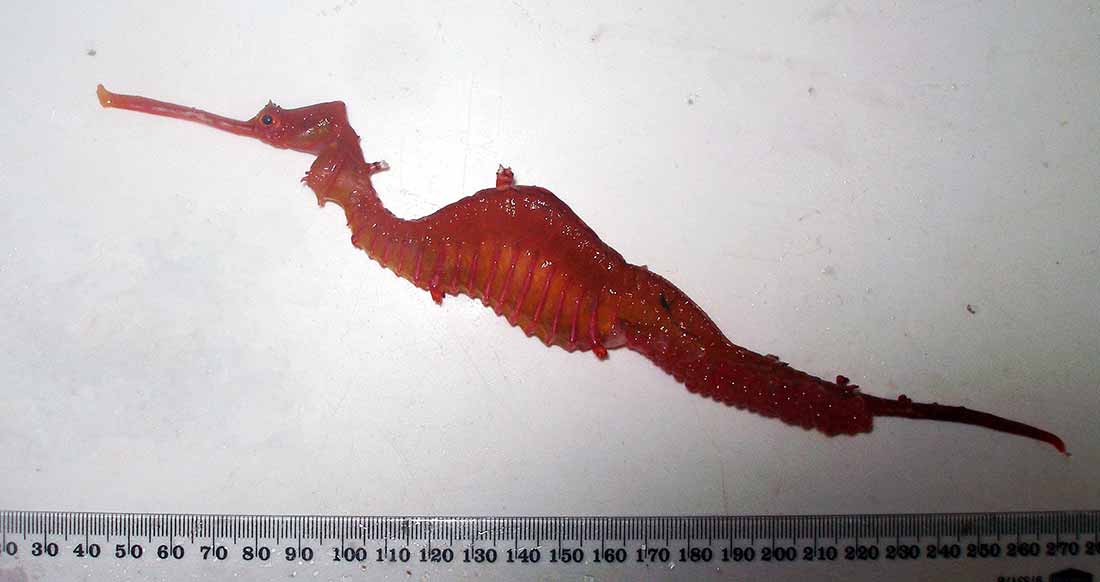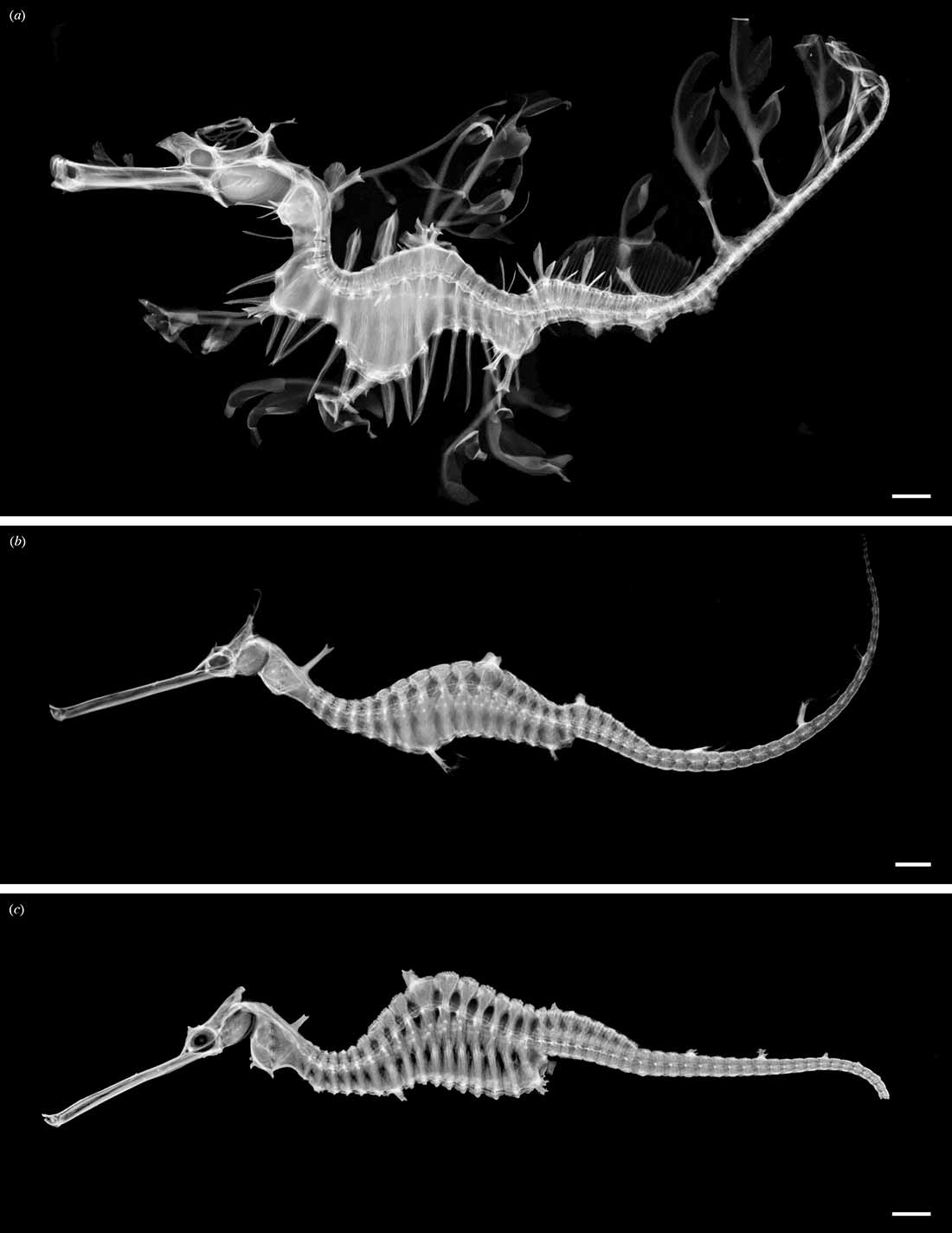New Species, the ‘Ruby Seadragon,’ Discovered by Scripps Researchers
Mysterious red fish emerges from museum collections
Published Date
By:
- Mario Aguilera
Share This:
Article Content

A 3-D scan of the newly discovered Ruby Seadragon.
While researching the two known species of seadragons as part of an effort to understand and protect the exotic and delicate fish, scientists at Scripps Institution of Oceanography at UC San Diego made a startling discovery: A third species of seadragon.
Using DNA and anatomical research tools, Scripps graduate student Josefin Stiller and marine biologists Nerida Wilson of the Western Australia Museum (WAM) and Greg Rouse of Scripps Oceanography found evidence for the new species while analyzing tissue samples supplied by WAM. The researchers then requested the full specimen as well as photographs taken just after it was retrieved from the wild in 2007. They were further surprised by the appearance of the newly identified animal. The color was a bright shade of red and vastly different from the orange tint in Leafy Seadragons and the yellow and purple hues of Common Seadragons.

This photo of the holotype of the Ruby Seadragon was taken shortly after being collected in 2007. Credit: Western Australian Museum
Stiller, Wilson, and Rouse gave their new discovery the scientific name Phyllopteryx dewysea, also referred to as the “Ruby Seadragon,” and details are published in the journal Royal Society Open Science.
“We’re now in a golden age of taxonomy and these powerful DNA tools are making it possible for more new species than ever to be discovered,” said Rouse, curator of the Scripps Benthic Invertebrate Collection. “That such large charismatic marine species are still being found is evidence that there is still much to be done. This latest finding provides further proof of the value of scientific collections and museum holdings.”
Stiller identified the original Ruby Seadragon, a male carrying several dozen babies, as part of her graduate research on population genetics of the two known seadragons across the Australian coast (seadragons are found exclusively off southern Australia). She studies migration patterns and genetic diversity to help bolster seadragon conservation efforts.

The Ruby Seadragon (top to bottom): on deck after collection; preserved; and in various views from 3-D scans. Credit for top photo: Western Australian Museum
“A CT (computer tomography) scan gave us 5,000 X-ray slices that we were able to assemble into a rotating 3-D model of the new seadragon,” said Stiller. “We could then see several features of the skeleton that were distinct from the other two species, corroborating the genetic evidence.”
The team believes the animal’s coloring suggests it inhabits deeper waters than the Leafy and Common Seadragons, as the red shading would be absorbed at depth and effectively serve as camouflage.
Following the initial finding, Wilson combed through the collections at WAM and found a second Ruby Seadragon specimen that had washed up on a Perth beach nearly a hundred years ago, and Stiller tracked down two others archived in the Australian National Fish Collection.
“This new seadragon first entered the Western Australia Museum’s collection in 1919, and lay unidentified for almost a century,” said Wilson. “Recognizing this new species demonstrates how museum collections underpin biodiversity discovery.”

A comparison of the three species of seadragons (top: Leafy Seadragon; middle: Common Seadragon; and bottom: Ruby Seadragon) through X-ray radiographs.
The authors now hope to put together a search expedition for Ruby Seadragons and witness them alive in the wild.
“It has been 150 years since the last seadragon was described and all this time we thought that there were only two species,” said Wilson. “Suddenly, there is a third species! If we can overlook such a charismatic new species for so long, we definitely have many more exciting discoveries awaiting us in the oceans.”
“I’ve always been fascinated with marine life, especially seadragons, so this is an amazing discovery,” said Mary “Dewy” White, cofounder of the Lowe Family Foundation, which supported the research. “People always talk about going to outer space but they forget about the ocean we have here on our own planet. For me ocean conservation and research is paramount, and we need to do what we can to encourage and nurture ocean exploration.”
Share This:
You May Also Like
UC San Diego is Strengthening U.S. Semiconductor Innovation and Workforce Development
Technology & EngineeringStay in the Know
Keep up with all the latest from UC San Diego. Subscribe to the newsletter today.



